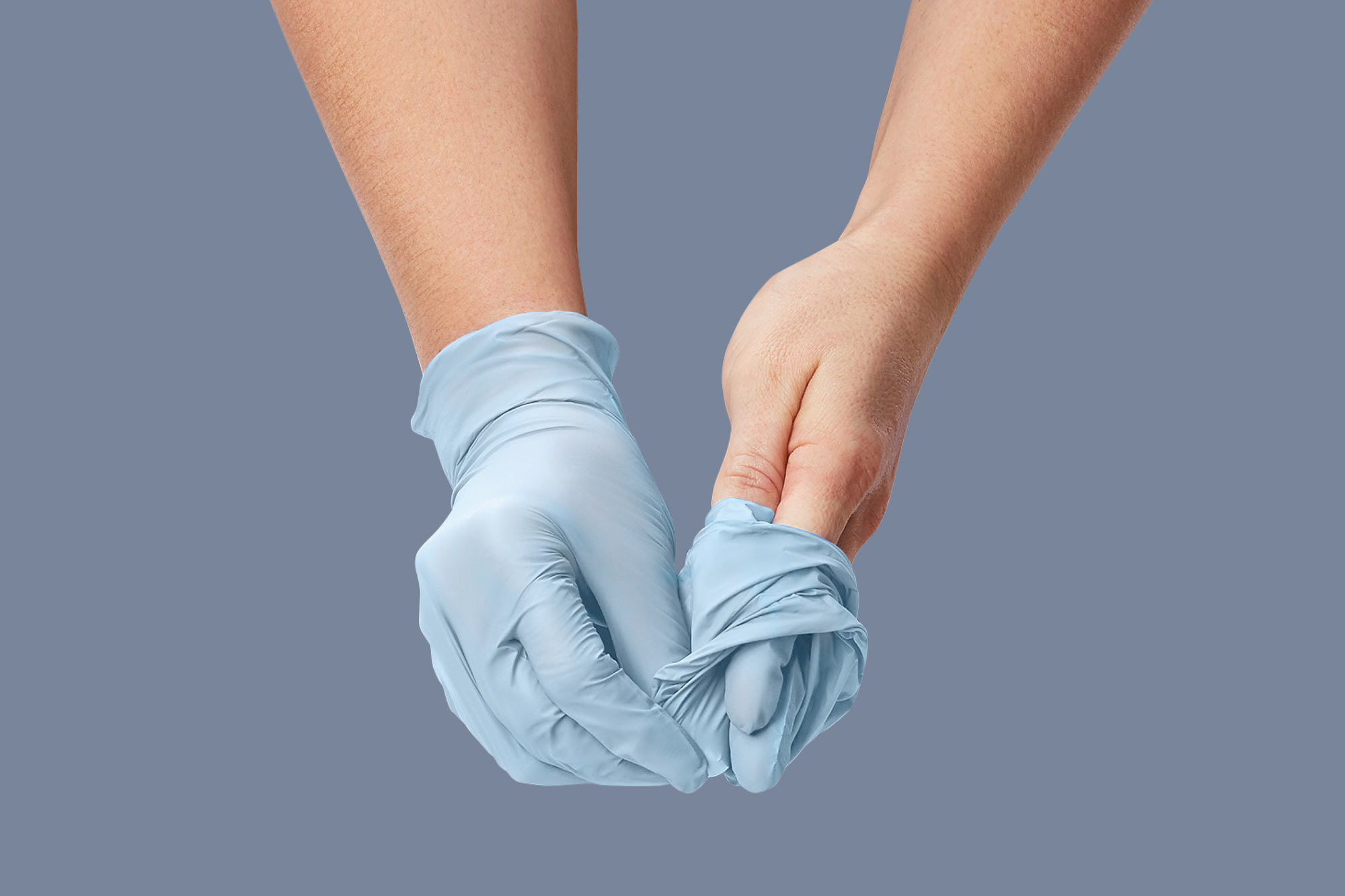COVID19 May 13
Gloves in the time of scarcity.
5 strategies to conserve and extend the life of your gloves

As the COVID-19 pandemic expands globally, the supply chain for personal protective equipment (PPE), including gloves, continues to be stressed, as demand exceeds available supplies. Given that gloves and other PPE are currently on allocation, crisis or alternate strategies may be necessary if medical gloves are running low or not available.
For medical professionals and others who typically use gloves but are not dealing with COVID-19 patients, there may be some wiggle room on glove use, freeing up the constraint on gloves. The first thing to do is to refer to the CDC’s Hand Hygiene in Healthcare Settings1.
The next thing is to understand that we are facing what the CDC refers to as “surge capacity,” or the need to manage a “sudden, unexpected increase in patient volume that would otherwise severely challenge or exceed the present capacity of a facility.”2 Three general levels of capacity include:
- Conventional (usual standard in infection prevention and healthcare settings)
- Contingency (small but insignificant impact on patient care)
- Crisis (strategies not commensurate with standard U.S. care and may be considered during glove shortages)
These strata can be used to prioritize glove supply conservation along the continuum of care. If your facility has undergone the necessary assessments and provisions, deeming it necessary to adopt contingency or crisis capacity plans, you may need some helpful tips to manage and extend the life of your gloves.
Here are five conservation strategies for your glove supply during the COVID-19 pandemic:
- Expiration dates need not always apply, according to the CDC2 and the FDA3. Use medical gloves beyond the manufacturer-designated shelf life in situations or settings where there is a lower risk of transmission (for example, around non-surgical, non-sterile patients or individuals with no known COVID 19 diagnosis). You should always inspect the gloves prior to use and, if there are discolorations, stains, visible tears or holes, discard the gloves.
- No need to change between patients without infectious diseases. Extend the use of medical gloves by not changing your gloves between patients with no known infectious diseases or when patients with the same infectious disease diagnosis are cohorted2. Gloved hands should always be cleaned between patients and at other times when hand hygiene would normally be performed during routine patient care. Be aware, though, that alcohol-based hand sanitizers may degrade vinyl gloves. If a glove becomes damaged—through holes, tears, damage or discoloration; contaminated by body fluids or chemotherapy drugs; or if it is clear that they no longer provide a barrier to liquids, please replace it.
- Consider using reusable surgeon’s gloves. Radioactive protective gloves or radiation attenuating surgeon’s gloves also offer fluid barrier protection. These gloves cannot be sterilized but can be cleaned following the manufacturer’s labeling. These are meant to be reused, if they are not damaged, with proper cleaning protocol.
Know the difference: surgical glove vs. exam glove
- Sometimes non-medical gloves are okay. Consider using non-medical gloves such as those used for food service, cleaning or other industrial-grade gloves that most closely align with the ASTM standards for medical gloves as outlined in the FDA’s Medical Glove Guidance Manual. According to the CDC, this should only be done in cases of severely limited or no available disposable medical gloves and for situations where there is no exposure to pathogens2.
- Don’t double-up no matter what! CDC Guidance does not recommend double gloves when providing care to suspected or confirmed 2019-COVID patients.4This may already be a rule or strategy in place, but there are always those who think that more layers means extra protection. This is not always the case!
It is also important to be aware that counterfeit medical and non-medical gloves may be on the market posing as medical gloves, especially during this time of reduced supply. As is outlined above, when operating in this critical time of shortages, there are some situations and settings where the type of glove you wear matters and other times where it does not; however, it is always necessary to be vigilant and use proper hand hygiene.
For more information on a related topic of extending the life of your PPE, read here about saving scrubs and laundering your linens. And if you have other questions, contact your Medline Representative or call us at 1 800 Medline.
References:
Ref 1 https://www.cdc.gov/handhygiene/providers/index.html
Ref 2 https://www.cdc.gov/coronavirus/2019-ncov/hcp/ppe-strategy/gloves.html
Ref 3 https://www.fda.gov/medical-devices/letters-health-care-providers/medical-glove-conservation-strategies-letter-health-care-providers
Ref 4 https://www.cdc.gov/coronavirus/2019-ncov/hcp/respirator-use-faq.html
